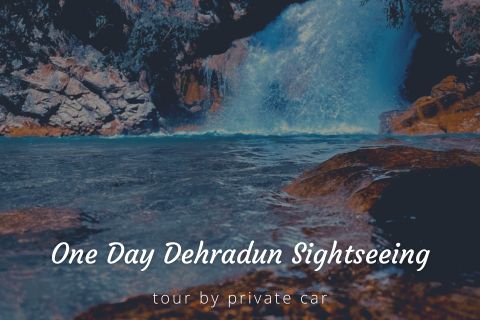Jabarkhet Nature Reserve Mussoorie Entry Fee
- 350 per Adult
- 500 for Expert Guided Walk
- 600 to 1200 for Walks Varies (depending on the topic)
- 1200 (for the day hikes) to 3000 (for overnight hikes) for Tailored Walks (will include a light snack or a local village lunch)
Jabarkhet Nature Reserve Mussoorie Phone
081 7126 4710
Rating:  | 4/5 stars
| 4/5 stars
Based on total 48 reviews
Jabarkhet Nature Reserve Mussoorie Address: Jabarkhet, Mussoorie, Uttarakhand, 248179, India
Jabarkhet Nature Reserve stands as India's first privately owned nature reserve, transforming 100 acres of degraded forest into a thriving Himalayan ecosystem. Located on the scenic Mussoorie-Dhanaulti road in Uttarakhand, this conservation success story offers visitors an authentic wilderness experience far removed from crowded tourist attractions.
The reserve operates at elevations between 1,800 and 2,000 meters, creating an ideal habitat for a diverse array of flora and fauna. Unlike manicured parks, Jabarkhet presents a genuine rewilded forest where nature dictates the experience.
Image Gallery of Jabarkhet Wildlife Reserve Mussoorie
Getting There
From Mussoorie
The reserve sits just 6 km from Library Chowk and 8 km from Picture Palace in Mussoorie. A 20-30 minute taxi ride brings you to the entrance gate. Many visitors combine their Jabarkhet visit with comprehensive Mussoorie tour packages that include multiple attractions in the region.
From Dehradun
Dehradun serves as your primary gateway, offering both railway connections (Dehradun Railway Station) and air access (Jolly Grant Airport). The journey covers 35 km to Mussoorie, followed by another 30-minute drive to the reserve. Consider booking a Mussoorie one-day tour that incorporates Jabarkhet into your itinerary.
Transportation Options
Local car rental companies provide reliable vehicles for the mountain journey. Additionally, many operators offer specialized nature tour packages that include transportation and guide services.
Planning Your Visit
Entry Fees
Advance booking is mandatory - walk-ins are not permitted. This policy ensures guide availability and manages visitor impact on the ecosystem. Entry fees start at ₹500 per person, which includes the services of a trained naturalist guide. These fees directly support conservation efforts, habitat restoration, and the salaries of local staff.
Operating Hours
The reserve welcomes visitors from sunrise to sunset, though specific timings vary seasonally. Night trails operate under separate protocols when available. Always confirm current timings during your booking process.
Booking Process
Secure your spot through the official Jabarkhet Nature Reserve website or contact them directly via their listed phone numbers. Due to the mandatory advance booking requirement, please plan your visit well in advance of your travel dates.
Flora and Fauna
Forest Ecosystem
The reserve showcases temperate Himalayan forest diversity through its impressive tree collection. Banj Oak dominates the landscape alongside spectacular Rhododendrons that burst into crimson blooms during spring. Himalayan Cypress and Deodar Cedar complete the canopy, while the understory thrives with Himalayan Indigo, Barberry, and various fern species.
Wildlife Encounters
Despite its compact size, Jabarkhet supports remarkable biodiversity. Camera traps regularly capture leopards, the reserve's apex predators, though direct sightings remain rare. Himalayan Black Bears frequent the area during fruiting seasons, leaving evidence like scat and claw marks on trees.
More commonly observed mammals include Barking Deer, Goral (small goat-antelopes), and Yellow-throated Martens. The reserve's smaller residents encompass Indian Porcupines, Leopard Cats, and various rodent species.
Birdwatcher's Paradise
Over 200 bird species call Jabarkhet home, making it a premier destination for birdwatching. Pheasant species include the Koklass and Kalij varieties, while multiple woodpecker species inhabit the forest. Thrushes, flycatchers, and other colourful birds create constant opportunities for observation and photography.
Trail Adventures
Flag Hill Trail
This moderately challenging climb rewards hikers with panoramic Himalayan views. On clear days, snow-capped peaks, including Banderpoonch and Gangotri, stretch across the horizon, creating unforgettable photographic opportunities.
Leopard Trail
Wind through dense oak forests where leopard signs frequently appear. Your guide will point out scratch marks, scat, and other evidence of these elusive predators, enhancing your understanding of the forest's ecosystem dynamics.
Mushroom Trail
The monsoon season transforms this trail into a fungal wonderland. Diverse mushroom species, including edible and bioluminescent varieties, showcase the forest's incredible biodiversity during the wettest months.
Specialized Activities
Guided nature walks form the core experience, focusing on ecological education and wildlife observation. Birdwatching tours cater to enthusiasts seeking specific species encounters. Photography opportunities abound for landscape, macro, and wildlife subjects, although patience is required for capturing large mammals.
Best Time to Visit
Spring Magic (March-April)
Spring ranks among the best visiting seasons as Rhododendrons paint the forest crimson. Pleasant weather conditions combine with excellent birdwatching opportunities, making this period ideal for first-time visitors.
Summer Clarity (May-June)
Clear mornings provide exceptional visibility for mountain views and wildlife spotting. Daytime temperatures can climb, but early morning visits remain comfortable and productive.
Monsoon Abundance (July-September)
The landscape transforms into vibrant green during monsoon months. This season excels for observing fungi, ferns, insects, and amphibians. However, trails become slippery and leeches appear, requiring appropriate preparation.
Autumn Perfection (October-November)
Post-monsoon conditions create crisp, clear air perfect for Himalayan views and wildlife observation. Many consider this the optimal season for combining Jabarkhet with other places to visit in Mussoorie.
Winter Wonder (December-February)
Bare trees enhance opportunities for spotting mammals, while potential snowfall creates magical winter landscapes. Cold temperatures require appropriate clothing, but reward visitors with unique photographic subjects.
Essential Visitor Information
What to Pack
Sturdy hiking shoes handle uneven terrain safely, while 1-2 litres of water maintain hydration during walks. Binoculars and cameras capture wildlife moments and scenic views. Layer clothing in earth tones (khaki, green, brown) to blend with the environment.
Seasonal additions include warm jackets for winter visits and rain gear during monsoon months. Leech socks become essential during wet seasons, while sun protection remains important throughout the year.
Conservation Guidelines
Maintain silence to maximize wildlife encounters and minimize ecosystem disturbance. Stay strictly on designated trails to protect fragile habitats. Follow "pack in, pack out" policies by removing all trash. Smoking and fires are prohibited due to the risk of forest fires.
Never feed wildlife, as this behaviour harms animals and disrupts natural feeding patterns. Respect your guide's expertise and follow their instructions throughout your visit.
Takeaway
Jabarkhet Nature Reserve offers India's most authentic private conservation experience, combining successful habitat restoration with meaningful wildlife encounters. The mandatory advance booking system, knowledgeable guides, and strict conservation protocols ensure both visitor satisfaction and ecosystem protection. Whether you're seeking leopard tracks, rhododendron blooms, or Himalayan vistas, Jabarkhet delivers genuine wilderness experiences that support local conservation efforts through responsible tourism practices.




